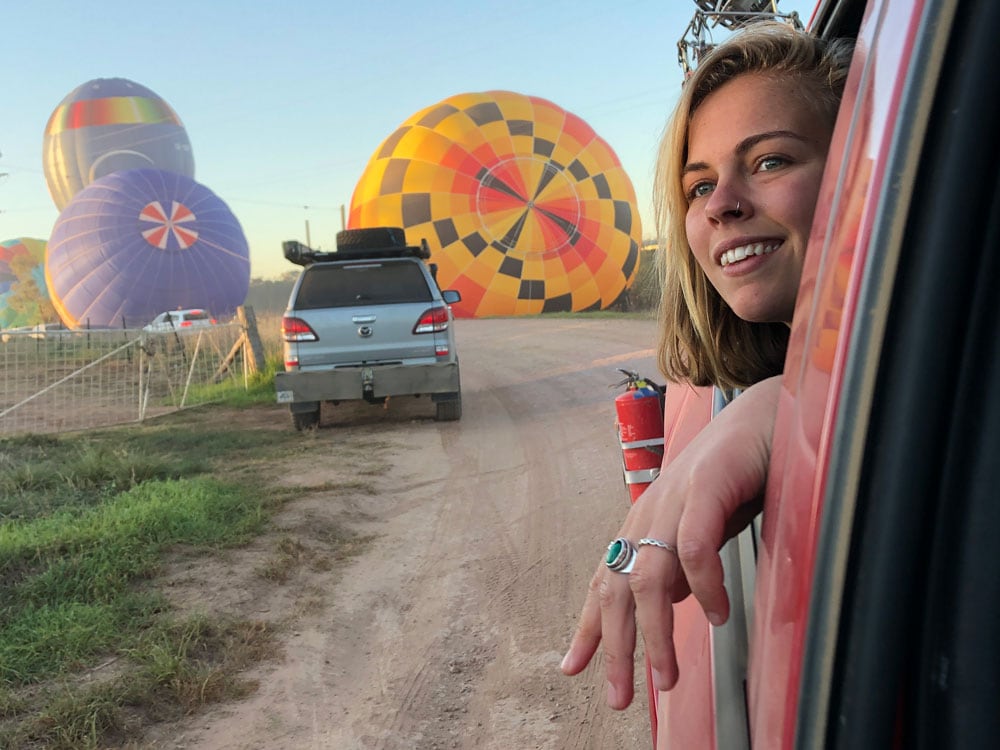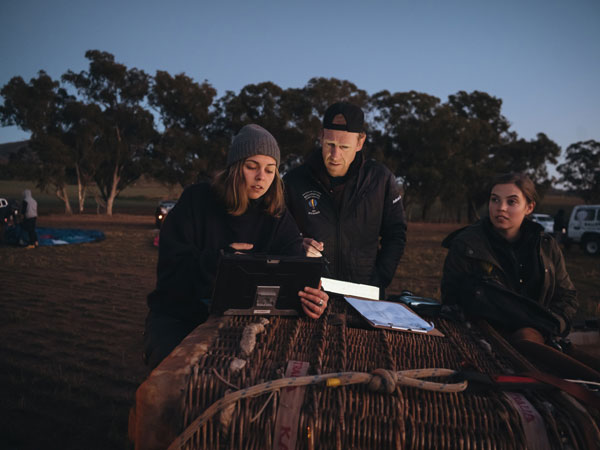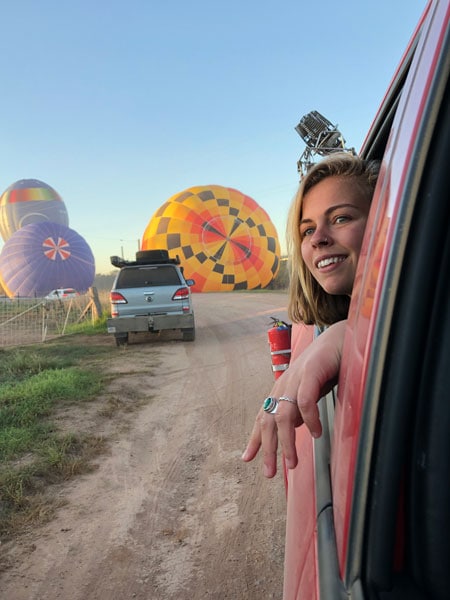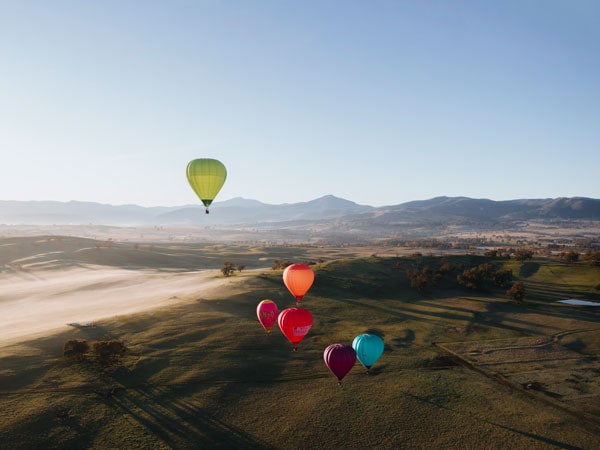17 November 2021
![]() 4 mins Read
4 mins Read

Keep reading our Australia Now series here.
When lockdowns grounded Global Ballooning Australia’s Melbourne and Yarra Valley flights, Georgia Croft saw an opportunity to establish a brand-new location for the company.
Today, one of only five female hot-air balloon pilots in Australia, the 24-year-old flies high above the scenic landscape and rolling hills of Mansfield and Mt Buller in Victoria’s High Country.
The day starts early – up to two hours before sunrise. Ungodly hours that only hot-air balloonists and bakers keep, says Georgia. The flip side is that post-flight day napping is entirely acceptable within their community.

Hot air balloon pilots are very early risers.
No day is typical with hot-air ballooning. “Every single day brings its own conditions and a whole new experience,” says Georgia. “Even this morning – and I’ve been flying up here for three months – we got a wind direction that allowed us to fly over Lake Eildon and look at the valley from a completely different perspective. And last week we accidentally got bogged in a paddock and had to call the landowner to get in with his tractor to come and help us out. It’s a beautiful balance of being a professional and doing what we know and love, but also working things out as we go.”
Georgia’s love for hot-air ballooning is manifold. From the fact it is the world’s oldest form of aviation and something of a lost art, to witnessing the awe of passengers, who are often first-timers, as they take in such inspiring sights as the sun rising over a snow-capped Mt Buller.

Hot air balloon pilot Georgia Croft, all set to take to the skies over Canowindra.
And she loves being part of the industry itself: the places it takes her and connections forged around Australia and beyond. “There are all these tiny little communities within this culture that have such a beautiful knowledge of their land and their environment, and also their [wider] community because of how engaged you have to be in that network in order to successfully do a hot-air balloon flight.” Employing the seriously high level of skill and knowledge it takes to pilot a hot-air balloon, from meteorology to navigation, it offers a unique way to explore the country. “You’re assessing the wind and the topography and you’re looking at all these really niche factors that you would have no reason to pay attention to otherwise,” she says.
It makes for a unique perspective on Australia, and not only literally. The job requires engagement with local landowners to get permission to launch and land: often popping into their backyard and saying, ‘Hey, do you mind if we land here?’ “And then 20 minutes later you’re in this random dude’s house and he’s walking you through his property and serving you a cup of tea,” laughs Georgia. “I am constantly blown away by how giving people are of their time and their place, and their knowledge of the place. When you turn up and show an interest in that way, your possibilities are endless. And, through those interactions, you learn so much more about the land and the way that it works.”

Hot air balloons over Mt Buffalo National Park. (Image: Visit Victoria)
And there’s a lot more Australia can reveal to us yet, Georgia reflects. “This period of hardship, which everyone has gone through individually, has made me sit back and really appreciate this country and how much we have to learn from it and grow within it as well. But more so than that, it’s made me realise how privileged I am to be here and to live here. It gives me this solid optimism going forward, because it opens us up to have more intimate and more in-depth experiences rather than constantly looking elsewhere. It’s through this we could really learn to cherish where we belong and where we are. And that makes me really excited.”
LEAVE YOUR COMMENT